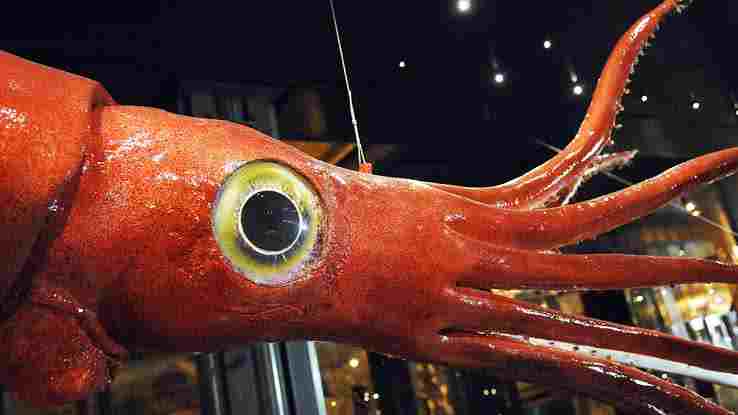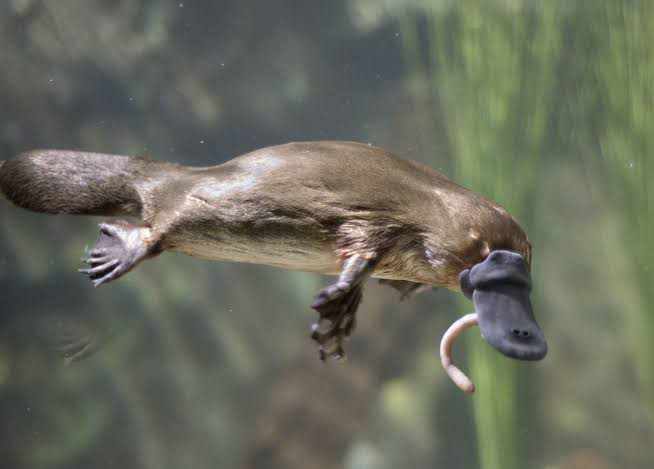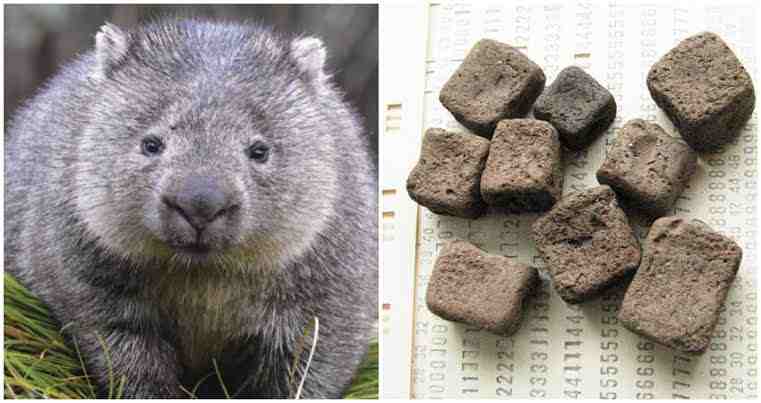 Alfred Ajibola
- Wed, 01st January, 2020 @ 3:22 PM
Alfred Ajibola
- Wed, 01st January, 2020 @ 3:22 PM
Topics in Biology
Cellular respiration in biology Len Academy biology mock questions for waec Len Academy biology midterm questions for SS1, 2nd Term Characteristics of saltwater habitat Aquatic habitat explained with its types Types of habitat: Terrestrial habitat explained with examples What is habitat? Difference between plant cell and animal cell Nucleus explained with its structures Nucleus explained with its types and functions Organelles of the cell explained with their characteristics Eukaryotic cell explained with its characteristics Prokaryotic cell explained with its structure Characteristics of prokaryotic cell Concept of cell Cell theory in biology Importance and limitations of ecological pyramid Protists explained with their characteristics Contents of the scrotum: Epididymis, vas deferens, spermatic cord and cremaster muscle Tropical savanna explained with its characteristicsAcademic Questions in Biology

From the above diagram, which of the organ below isn't a requirement for the male reproductive system?
A. Bladder
B. Ureter
C. Glans Penis
D. Testis
E. Bulbourethral Gland
F. Epididymis
A walnut shaped male accessory sex organ located between the bladder and penis is the _____.
A. Ductus Ejaculatorii
B. Bulbourethral Gland
C. Prostate Gland
D. Ductus Deferens
E. Seminal Vesicles
F. Epididymis
In a food chain, the primary consumers are classified under trophic level _____.
A. Zero
B. One
C. Two
D. Three
E. Four
F. Five
Cold blooded animals are referred to as _____.
A. Homeotherms
B. Endotherms
C. Poilokitherms
D. Ectotherms
E. Thermotherms
F. None of the above
All reptiles are vertebrates.
A. True
B. False
_____ cells are responsible for the formation of osteoblasts.
_____ is a bone that constitute the axial skeleton.
Which of the following is false concerning cartilages and bones?
Biology is one of the core science subjects taught at the senior level of secondary education. Science as we know is a systematic process of making enquiry about living and non-living things.
The word "biology" originated from two Greek words. These are: Bios and Logos. 'Bios' means life while 'Logos' means knowledge (or to study). For this reason, biology is defined as the study of life. In short, this is why some people often refer to biology as a life science.
It is worthy of note to state that life goes beyond plants and animals. In general, we can divide biology into 2 main branches. These are:
Botany
Zoology
In biology, anything that has life is generally referred to as a living organism.
Living organisms are found on every part of the earth; from the soil (lithosphere) to the waters (hydrosphere) and the air (atmosphere).
Please read on the atmosphere and its composition here.
Note: In many instances, we simply refer to a living organisms as organisms.
Some scientists are of the school of thought that viruses aren't living organisms while others consider them to be living.
Interestingly, viruses are an unusual group of organisms in the sense that they can be both be categorized as living and non-living. This is a statement of fact based on the assertion below:
Outside a living cell, viruses possess no characteristics of life, thus are considered inanimate and non-living; just like a stone or paper.
Please read on the characteristics of living organisms here.
Recall that all living organisms are built on microscopic units called cells. However, viruses on their part do not possess an ideal cell structure, thus cannot carry out the basic life processes on their own.
Meanwhile, when a virus finds itself in a living organism (that is: a cell, tissue, organ or system), it morphs into a living organism. Inside the living environment, it can now carry out some basic life activities like reproduction, irritability and death.
You can think of it this way: When a virus finds its ways into a living system; let say a human, it multiplies and spread through the process of reproduction. Also, if appropriate drugs are take by the infected individual, such virus may be killed (death). The aforementioned basic characteristics of life (reproduction and death) makes the virus a living organisms.
From the above explanations, viruses are therefore preferably considered to be in the borderline of life.
The majority of living organism cannot be seen with the naked eyes. For instance, it is reported that an average human being has an estimated 100 trillion micro-organisms within and around them.
Please read on amazing facts in biology here.
A microscope is needed to see these organisms; and this is why they are often referred to as microscopic organisms or micro-organisms.
All microscopic organisms are single-celled or unicellular. Examples of unicellular organisms include all bacteria, protists and certain fungi (e.g yeast).
Please read more on protists and their characteristics here.
You can consider studying the course 'microbiology' if you are interested in microscopic organisms.
You can read on micro-organisms causing food, water and air borne diseases here.
Larger organisms have multiple cells, hence are termed multi-cellular organisms. For instance, humans are composed of trillions of cell.
In an attempt to survive, understand that all living organisms will require non-living factors called abiotic factors within their environment. As an instance, living organisms require air and water (which are non-living components of their environment) to stay alive.
Please read more on the biotic and abiotic components of the ecosystem here.
Kindly share this article via the links below:

Please click here to contact Alfred if you require any of the following services:
If you need a standard website at an affordable price.
Online training on the academic subjects: biology, chemistry and basic science.
If you require an advanced smart school management system (web application) for your school.
Click here to read on Len Academy Smart School Software.
Please click here to follow Len Academy on Google News.
Amazing facts in Biology
Russia is home to the largest area of forest in our world with a land mass of 815 million hectares

Giant squid lives deep in the ocean and they have the largest eyes in the world
The movements of the fingers are controlled by muscles of the palms and forehands

Platypus (sometimes referred to as the duck-billed platypus) is an egg-laying, semiaquatic mammal found in eastern Australia. It has no stomach and as such, its food goes from the mouth through the esophagus and directly to their intestines.

Pufferfish contain a toxin called tetrodotoxin. This makes them foul tasting and poisonous to predators. Tetrodotoxin is about 1,200 times more poisonous than cyanide, and there is enough toxin in one pufferfish to kill 30 adult humans. Unfortunately, there isn't any known antidote to this poison.
Interestingly, a delicacy in Japan (called fugu) is made from pufferfish. This meal is very expensive, and must be prepared by trained and licensed chefs. An improper preparation of fugu may lead to the customer's death. Sadly, such deaths are recorded annually

Wombats are the only animal with a cube-shaped poo. They can stack up these cube-shaped poo, marking their territory with it

Robert Wadlow (1918–1940) remains the tallest man ever recorded in the Guinness World Records. He was an American who stood at 8 feet, 11 inches.
An abnormally enlarged pituitary gland had resulted into Robert Wadlow's giant size.
Cockroach is the fastest land animal on six legs

Like humans, all apes laugh when tickled

An ostrich's eye is bigger than its brain
Notable points in Biology

An artery is composed of three layers:
The outermost layer is termed tunica adventitia (or tunica external). It consist mainly of collagen fibres and connective tissues that anchors the arteries to other nearby tissues.
The middle layer is named tunica media. It is made up of smooth muscles and elastic fibres that supports the artery in conveying blood at high pressures.
The inner layer is called tunica intima (or tunica internal). It is lined by a smooth tissue called endothelium, and is made up of a fine network of connective tissues.
All living organisms possess various features in order to survive in their environment. This is the concept of adaptation. As an instance, a fish is able to live in water because it has gills and fins.
Also, a camel is able to survive in the desert because it has large feet to aid walking on sand without sinking. It also has long eyelashes to help protect it from the blowing sand and wind.
Plants are also able to live in different habitats because they have the required adaptive features towards that habitat. For instance:
Plants that live in/on water are termed hydrophytes.
Plants that live on land with moderate amount of water are termed mesophytes.
Plants that live on deserts or arid lands are termed xerophytes.
The point is:
All organisms have various features on them that enables them adapt in their habitat
For a thing to be considered living, it must possess all the basic characteristics of life. These include:
Movement
Respiration
Nutrition
Irritability or Sensitivity
Growth
Excretion
Reproduction
Death
Adaptation
Competition
Please read the explanations on all the basic characteristics of life here
During strenuous exercises like sprinting or running, your body may actually work in the shortage of oxygen. During this time, your body owes oxygen (called oxygen debt) and it must be replenished or repayed after the exercise is stopped. This is why you breathe excess of oxygen after you stopped the exercise.
This is the concept of anaerobic respiration

A food chain is a diagram that shows the relationship between plants and animals within a habitat on the basis of how they rely on each other for food.
Note: Habitat is a place where an organism live. It is of three types: